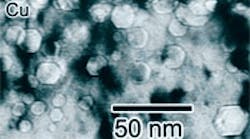Composite materials have been around for decades. But MIT might have tapped into a new material that could have a significant impact on manufacturing: nanocomposite materials that can endure high temperatures and high levels of radiation.
Michael Demkowicz, an assistant professor in MIT's Department of Materials Science and Engineering, and his team at Los Alamos National Laboratory, recently received a federal Energy Frontier Research Centers grant to develop nanocomposite materials.
Demkowicz says these materials could be used in energy applications, such as nuclear power, fuel cells, solar energy and carbon sequestration.
Demkowicz's first target is radiation-resistant materials, which could improve the efficiency and safety of nuclear power plants.
Today, stainless steel is used to line nuclear reactors. But with radiation-resistant materials, the lifetime of nuclear reactors could be vastly extended, says Demkowicz, allowing them to operate under higher radiation doses. Whereas current reactors consume only about 1% of their fuel, these improved reactors could burn a higher percentage of nuclear fuel and leave behind less waste.
Under normal circumstances, when metals are exposed to radiation, defects ensure when high-energy particles, such as neutrons, slam into individual atoms, knocking them out of their place. Clusters of these defects can make even the toughest material brittle.
Once a promising candidate is identified, it takes several years of testing before a new material can be approved for use in a nuclear reactor, so it likely will be at least a decade before any of his potential new materials can be used, says Demkowicz.
See Also




